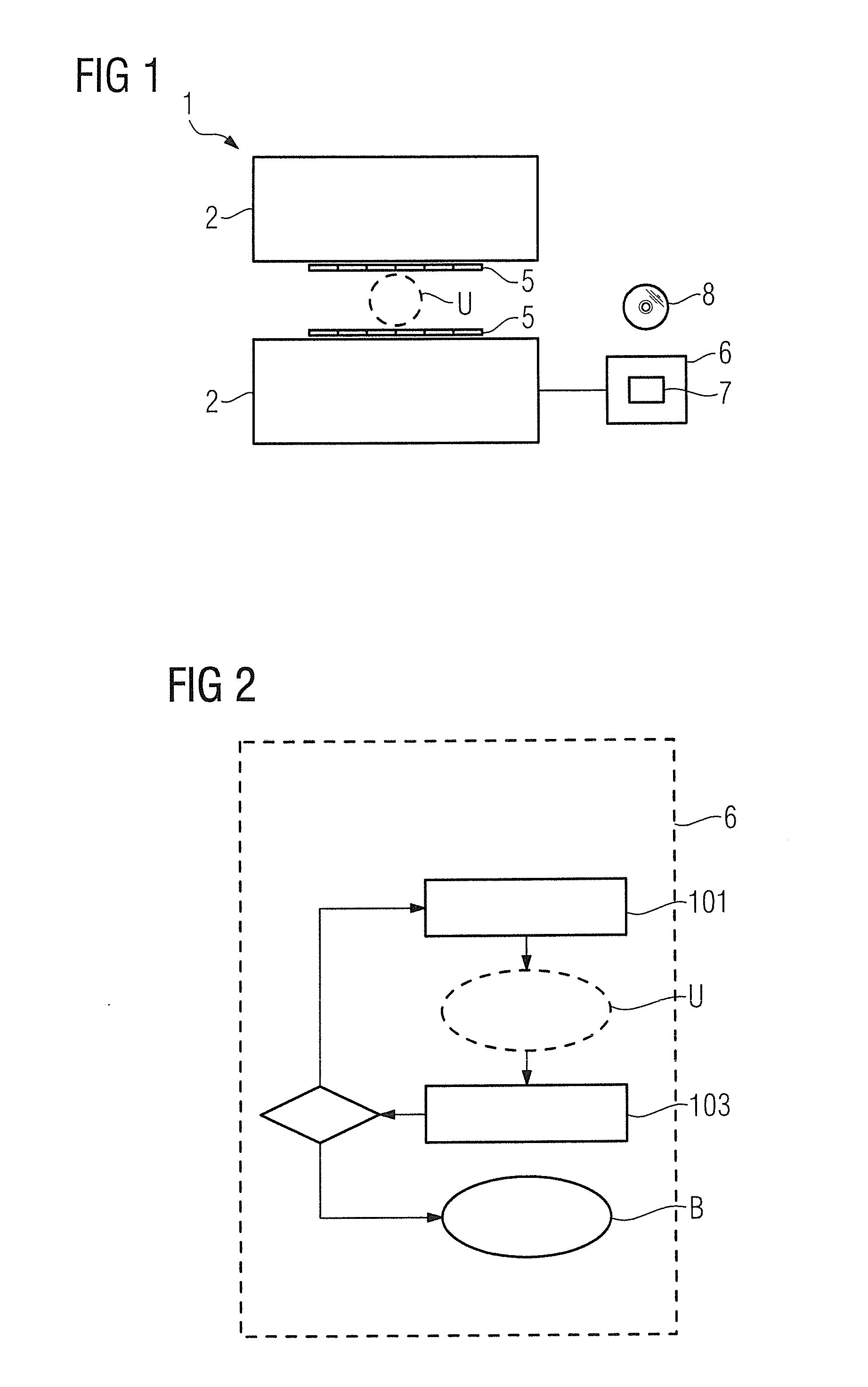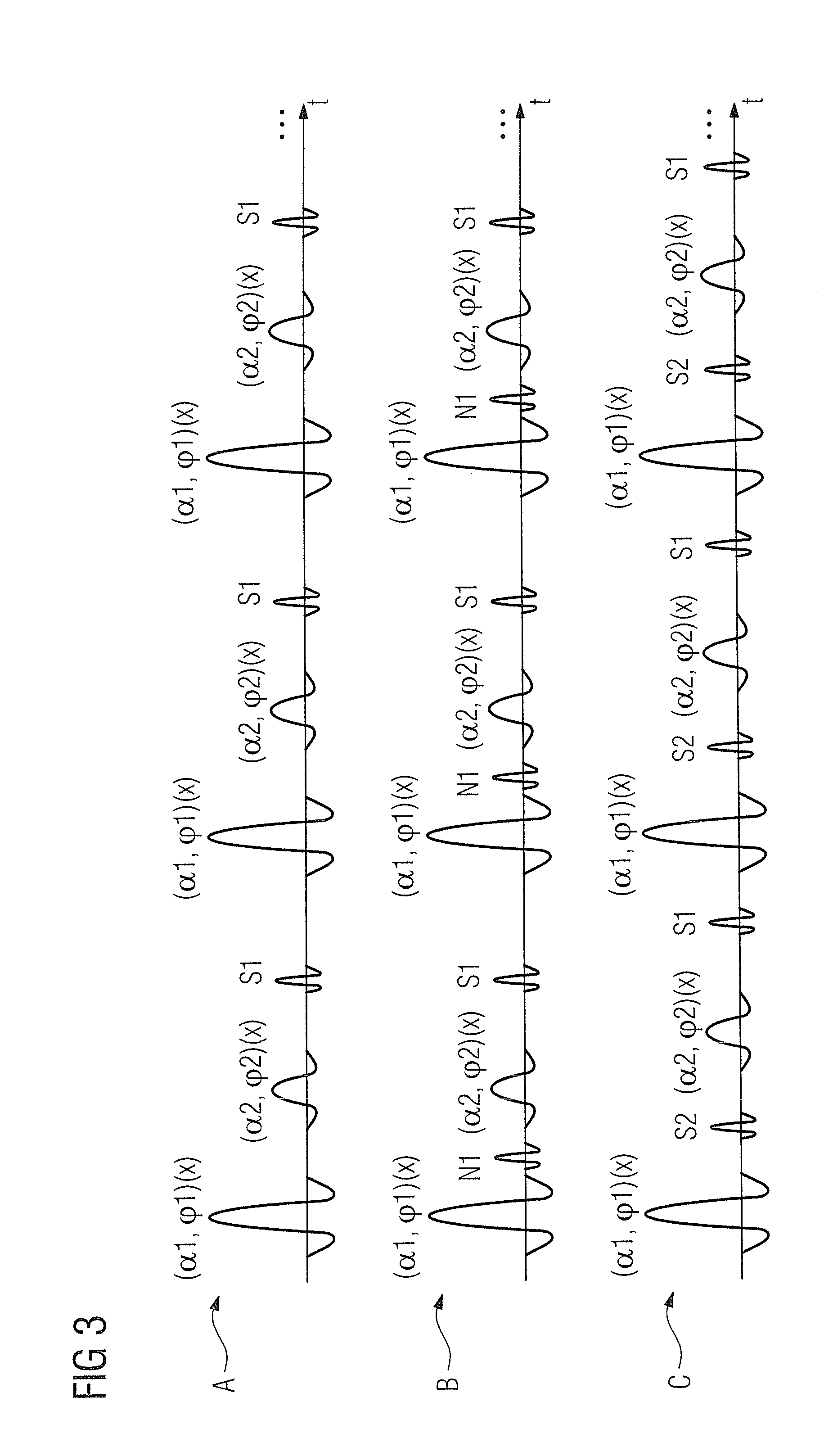Magnetic resonance method and system to generate an optimized mr image of an examination subject
a magnetic resonance and optimized technology, applied in the field of magnetic resonance method and system to generate an optimized mr image of an examination subject, can solve the problems of not being able to directly affect the homogeneity of bb>1, the ability to recognize the desired details of the imaged examination subject, and the use of such examinations. the effect of simple and quick manner
- Summary
- Abstract
- Description
- Claims
- Application Information
AI Technical Summary
Benefits of technology
Problems solved by technology
Method used
Image
Examples
Embodiment Construction
[0023]In FIG. 1 a magnetic resonance apparatus 1 is schematically represented by a magnet unit 2 and parallel RF transmission and / or reception coils 5. The basic design of a magnetic resonance apparatus composed of a magnet unit, radio-frequency coils and gradient coil unit as well as the associated control units of such a magnetic resonance apparatus are known and therefore need not be explained in detail herein.
[0024]During an MR examination (data acquisition) an examination subject—for example a region of a patient that is to be examined—is located in an examination volume U of the magnetic resonance apparatus 1. As described above, RF pulses are radiated into the examination subject located in the examination volume U in the course of the MR examination. The signals resulting in the examination subject due to the radiation of the RF pulses are acquired.
[0025]The magnetic resonance apparatus 1 is connected with a processing unit 6 which can receive data from the magnetic resonanc...
PUM
 Login to View More
Login to View More Abstract
Description
Claims
Application Information
 Login to View More
Login to View More - R&D
- Intellectual Property
- Life Sciences
- Materials
- Tech Scout
- Unparalleled Data Quality
- Higher Quality Content
- 60% Fewer Hallucinations
Browse by: Latest US Patents, China's latest patents, Technical Efficacy Thesaurus, Application Domain, Technology Topic, Popular Technical Reports.
© 2025 PatSnap. All rights reserved.Legal|Privacy policy|Modern Slavery Act Transparency Statement|Sitemap|About US| Contact US: help@patsnap.com



